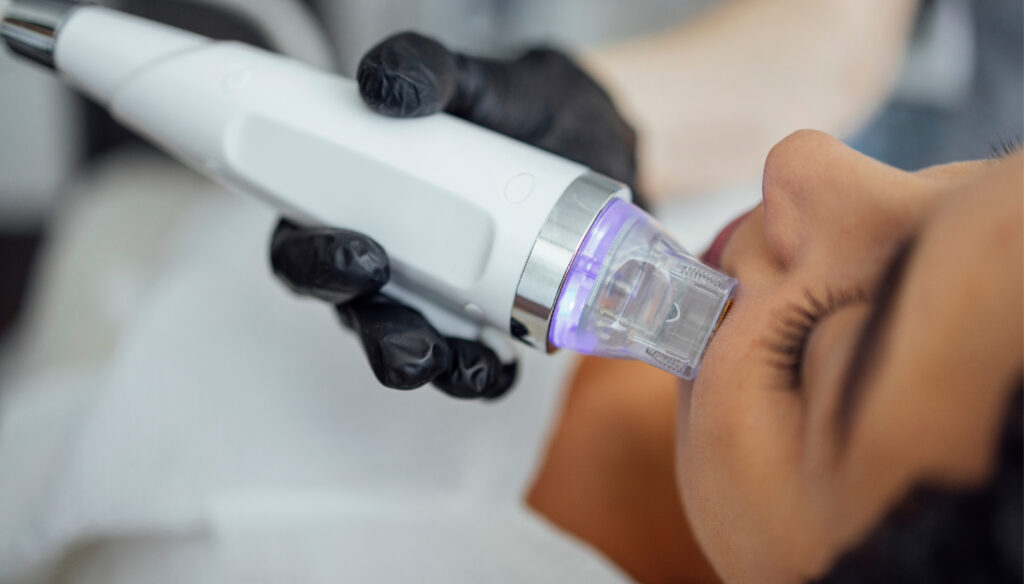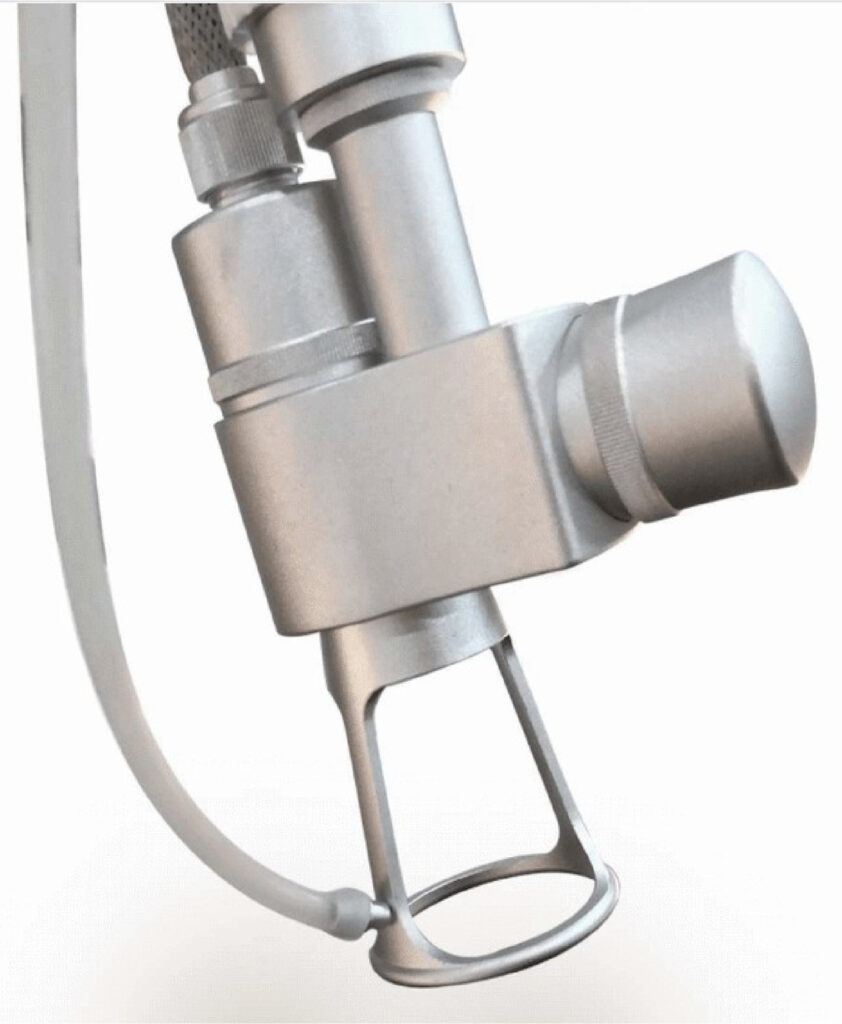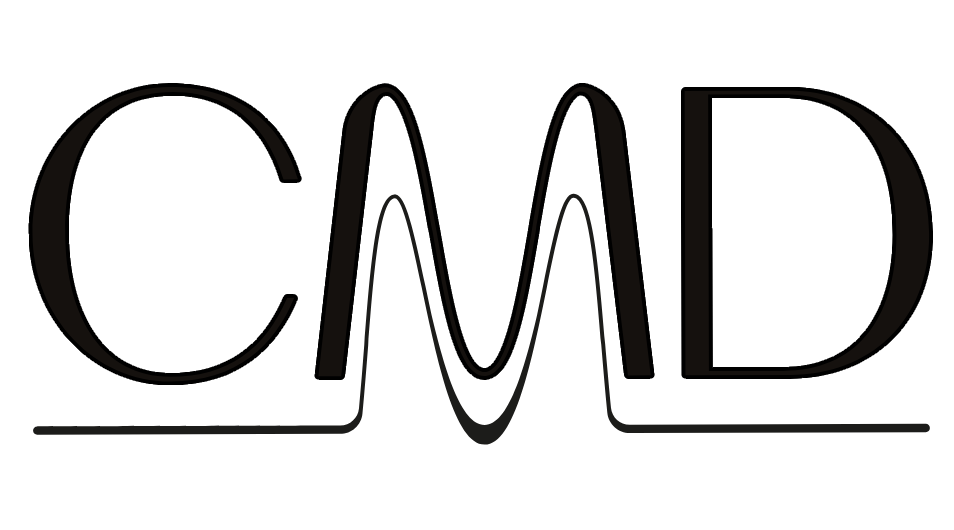Interested in advanced aesthetic technology?
AT CMD, WE UNDERSTAND THE IMPORTANCE OF RELIABILITY AND OFFER A CURATED SELECTION OF NON-SURGICAL AESTHETIC DEVICES.
OUR GOAL IS TO EMPOWER YOU TO MAKE PROFITABLE CHOICES FOR YOUR BUSINESS, ENSURING YOU STAY AHEAD IN THE DYNAMIC FIELD OF AESTHETIC TREATMENTS.
CMD AESTHETIC SOLUTIONS D.O.O.
Kidričeva ulica 24, Celje, 3000
Microneedling vs. Fractional Laser
Date
Category
CMD
In the ever-evolving landscape of aesthetic treatments, microneedling and fractional laser procedures stand out as popular choices for skin rejuvenation. This in-depth analysis aims to provide a thorough understanding of the similarities, differences, and nuanced aspects of these two techniques, catering to both practitioners and individuals seeking aesthetic enhancements.
1. Objective of Treatment: Understanding How Cells Respond (Biochemical Cascade)
► Microneedling and fractional laser share a common goal: the creation of micro-wounds to initiate a series of biological responses. This process begins with the inflammatory stage, where growth factors are released, followed by the proliferative stage (regenerative stage) and, ultimately, the remodeling stage. These stages collectively stimulate neo-collagenesis (production of new collagen) and contribute to the formation of a tighter collagen matrix, resulting in a more youthful skin appearance.
2. Mechanism of Action: Microneedling Precision vs. Fractional Laser Precision
► Microneedling employs the precision of needles to puncture the skin and create micro-cuts, prompting the body to heal these minute injuries.
► Fractional laser, on the other hand, introduces coagulation or vaporization, inducing the body to generate new tissue to fill the ‘channels’ or ‘wells’ created during the process. The choice of wavelengths further refines the extent and nature of tissue destruction.
3. Variations in Technique: Navigating Needle Types and Laser Wavelengths
► Microneedling introduces complexity through various needle types and depths, with options for needles with or without Radiofrequency (RF). The inclusion of RF further delineates between full needle RF and needle tip only RF.
► Fractional laser treatments offer a spectrum of wavelengths targeting different molecules. A shorter wavelength like 1550 nm creates more defined channels, whereas Er:YAG or CO2 lasers primarily target water, resulting in ‘wells’ where tissue is evaporated.




4. Complexities of Treatment: Understanding Depth and Wavelength Implications
► The complexity of microneedling lies in selecting the appropriate needle type and depth based on individualized treatment goals.
► Fractional laser treatments demand a nuanced understanding of wavelength choices, influencing the depth and nature of tissue alteration, providing practitioners with a versatile range of options.
5. Recovery Time and Aggressiveness: Balancing Intensity and Downtime
► Fractional laser, being inherently more aggressive, necessitates an extended recovery period compared to microneedling. This aggressiveness, however, results in a larger portion of the skin being replaced with new tissue, contributing to longer-lasting results.
6. Therapist Skill and Equipment Impact: Elevating Aesthetic Outcomes
► The impact of therapist skill and equipment quality cannot be overstated. A skilled microneedling therapist can surpass the results achieved by a less competent laser therapist, emphasizing the crucial role of practitioner expertise in both techniques.
7. Adjustability and Customization: Tailoring Treatments to Individual Needs
► Both microneedling and fractional laser treatments allow for a personalized approach, offering the flexibility to adjust the treatment’s aggressiveness based on individual client characteristics and desired outcomes.
8. Pricing and Affordability for Clinics: Balancing Cost and Quality
A crucial factor for individuals exploring aesthetic technologies is understanding the costs associated with microneedling and fractional laser machines.
► Microneedling is often a more affordable technology, making it an appealing starting point for those interested in offering cosmetic dermatology services.
► Fractional laser, while requiring a larger upfront investment, offers higher return per session. The cost of Fractional Laser treatments exceeds that of Microneedling. Clinics may find it worthwhile to consider Fractional Laser as a strategic investment to elevate their dermatology practice.
9. Choosing the Right Treatment for You: Personal Considerations
► Making the decision between microneedling and fractional laser involves personal considerations such as pain tolerance, downtime tolerance, and individual skincharacteristics. Factors like skin type, specific skin concerns, and lifestyle constraints play a crucial role in determining the most suitable treatment.
► Consultation with a qualified aesthetic professional is vital to assess individual needs and goals, ensuring a personalized approach that aligns with the client’s expectations and preferences. This section emphasizes the importance of open communication between practitioners and clients to achieve the best possible aesthetic outcomes.
Learn more about MICROBOT RF, the intelligent Microneedling device, and explore CMD’s diverse technologies. Connect with us for a personalized discussion on the investment that best suits your business.
